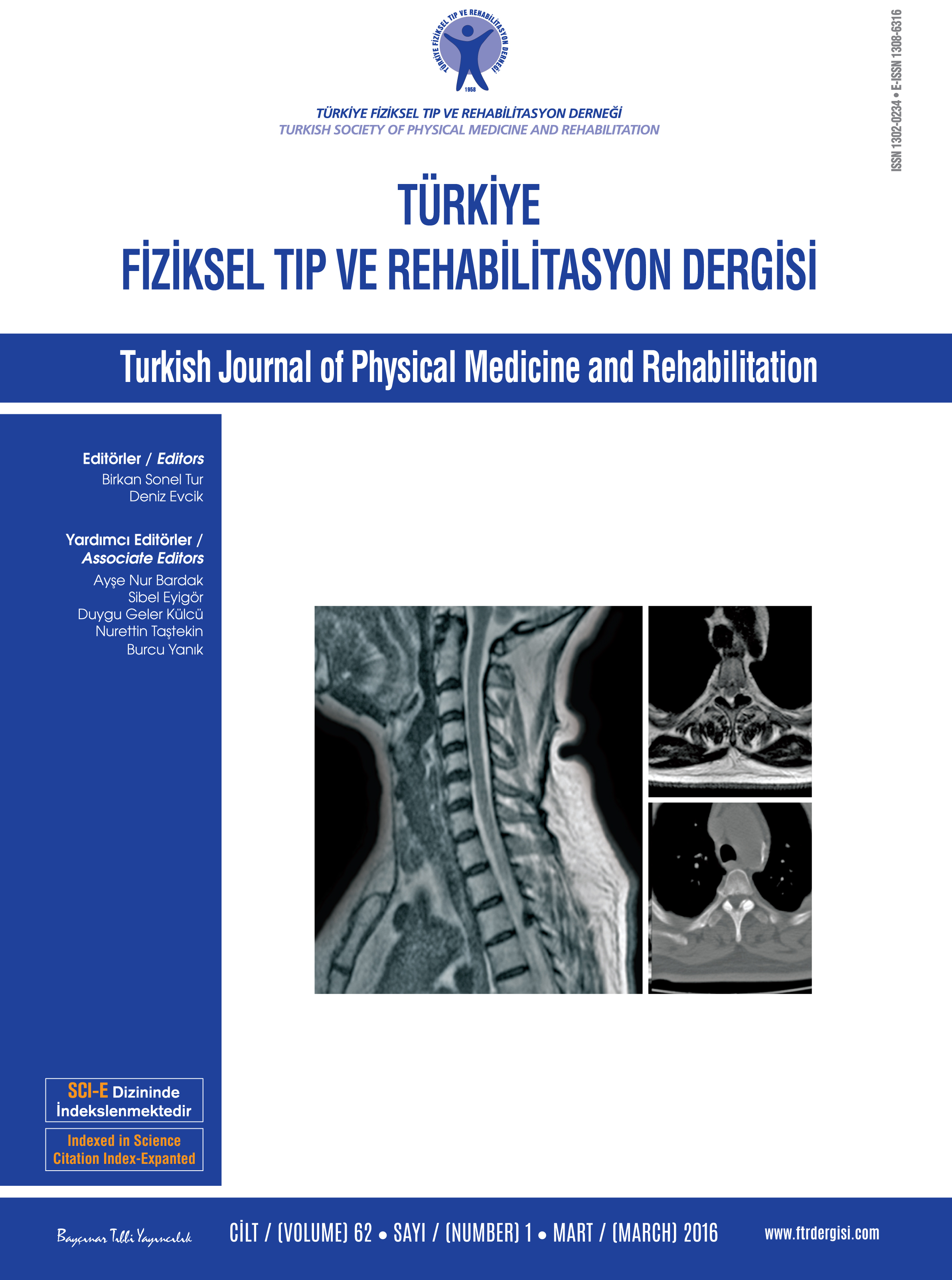Actual use and satisfaction of lower extremity orthoses in neurological disorders
2 Department of Physical Medicine and Rehabilitation, Near East University, Lefkosa, Cyprus DOI : 10.5606/tftrd.2016.96236 Objectives: This study aims to investigate the use and degree of satisfaction of lower extremity orthoses in patients with neurological disorders.
Patients and methods: Between January and December 2007 and January and June 2013, a total of 193 patients (109 males, 84 females; mean age 26.5±22.8 years; range 1 to 80 years) with 231 prescriptions were included. The prescriptions of lower extremity orthoses were extracted from the registers. Patients were interviewed via telephone call about six months after the prescription date and the acquirement, usage, compliance, and degree of satisfaction were questioned. The satisfaction was assessed using a five-point Likert scale (0-4).
Results: Of the 231 prescriptions, 198 (85.7%) were reported being purchased. The main reasons for not purchasing were a lack of interest of the caregivers/patients, worsening/improving of the disease, belief of ineffectiveness, and cost/social security concerns. Among the devices which were purchased, 16.7% were reported to be never used, 22.7% were being used irregularly or quitted, and the rest 60.6% were being used on a regular basis. The main reason for not using the prescribed devices was related to the unsuitableness of the device over time. Overall satisfaction score was 2.48±1.0 (0-4) among the users. A statistically significant difference in the degree of satisfaction between the regular and irregular users was observed (2.7±0.9 vs. 1.8±1.1, p=0.000).
Conclusion: The patients usually purchase the prescribed orthoses and the compliance is favorable. Overall satisfaction is moderate. To fulfill the gratification of the patients, physicians and caregivers should pay more attention to certain issues including the proper usage of the devices, regular follow-ups, patient education, and engagement of the users.
Keywords : Compliance; orthopedic shoes; orthosis; satisfaction

















